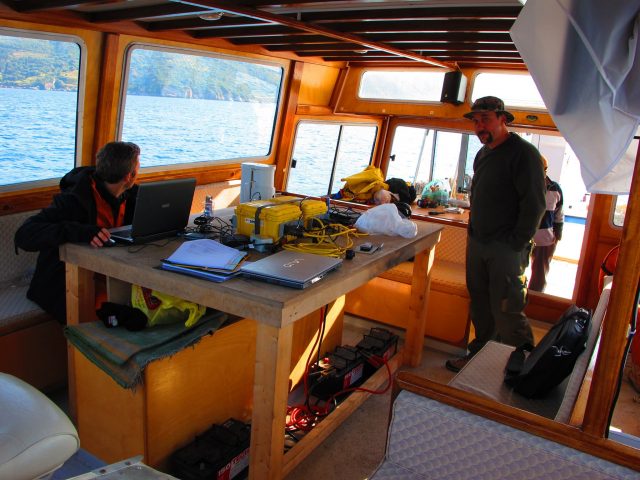Ανάρτηση από WW2 Wrecks in Greece
https://www.facebook.com/WW2Wrecks/posts/1368865713463261
Found and identified: The Beaufighter KV930 shot down on 12 September 1944
Interviews, WW2, WW2 in Greece
By Pierre Kosmidis
Photos and historical research: Makis Sotiropoulos and George Karelas
Map of the attack created by George Karelas
Diving and Research Team: Makis Sotiropoulos, Dionyssis Giannatos, Vassilis Medogiannis
Greece has seen a lot of action during WW2 and many wrecks of that period vividly demonstrate the fact that this rather obscure -compared to other fronts- theatre of operations played a crucial role in the final Allied victory.

Few aircraft wrecks remain nearly intact to this day, as most of the wrecks already found where either cannibalised and sold as scrap in the postwar period, or looted by unscrupulous persons and sold for personal profit, thus destroying vital WW2 evidence.

One such aircraft, possibly one of the few worldwide that remain virtually intact, is a Beaufighter close to the islands of Kefalonia and Ithaki.
Ithaki, known as the kingdom of Ulysses from Homer’s Odyssey, is also home to this exceptionally preserved Beaufighter.
Having survived looting and relic hunting for seven decades since it was shot down, we can still see the guns and even personal belongings of the crew, left behind when the aircraft was ditched!
BEAUFIGHTER SHOT DOWN!
Let’s take a time travel and.. fly back to September 1944, a month before the Germans evacuated Greece, as the Red Army was crushing the nazis in the East and the Western Allies were progressing towards the heart of the Reich from France and Italy.

In the Aegean and the Ionian Seas, east and west of mainland Greece, Allied aircraft choose targets of opportuniity and pound the retreating nazis, virtually isolating the garrisons, mainly in Crete, Rodos and Milos islands. Bristol Beaufighters were the main aircraft used for this purpose, as they could carry rockets, bombs and were armed with machine guns and cannons.
In the afternoon of September 12, 1944 the Beaufighter KV930 of 19 SAAF (South African Air Force) Squadron takes off from Biferno (Italy), along with three other aircraft.

On his first mission, pilot Arthur Geater was with navigator Stan Dellow.
Their target: “Enemy shipping – Search and destroy”
Geater along with the other three Beaufighters comb the area for Kriegsmarine ships:
They fly low over Preveza, then to Lefkada island and Kefalonia island with their mission taking them as far as Zakynthos island.
At approximately 17:05 hrs. they reach the northern tip of Ithaki island and observe a German “Siebel” ferry trying to hide in one of the fjord-like coves of the island.
The “Siebel” ferries, (“Siebelffähre” in German), were originally developed by the German engineer Friedrich Siebel for “Operation Sea Lion”, the cancelled invasion of England in 1940.
As the invasion never materialised, “Siebel” ferries were subsequently used in different fronts across Europe.
The Beaufighters started their attack, but were… greeted with strong anti-aircraft fire from the “Siebel”.

Geater’s Beaufighter was hit and both engines received multiple antiaircraft rounds. Oil and thick smoke coming out of the engines meant that the pilot had to safely ditch the aircraft or risk an uncontrolled crash.
The “Siebel” sustained heavy damage, according to German records and was beached to avoid sinking.

Geater successfully managed to ditch the aircraft and both he and the navigator took to the inflatable dinghy to save themselves.
Locals who saw the aircraft fall off the sky rushed to their fishing boats to rescue the Allied pilots. As an elder local said, “we would row as fast as possible and would even get into a fight with the other Greeks rushing to the scene in order to reach the airmen first!”
Indeed, half an hour later the two airmen were saved by Greeks and led to Ithaki island, where they were provided with food and shelter.

Despite their rescue from the sinking aircraft, being on the actual island of Ulysses, simply meant that their… Odyssey was not over.
While on their way to another hiding place in Ithaki, their fishing boat was stopped by Germans combing the area to locate the airmen and while Dellow, who did not know swimming, was arrested, Geater managed to dive at sea and escape.
With the help of the Greek resistance in Ithaki he eventually returned to Italy and continued his action as a Beaufighter pilot. Dellow survived the war after spending months as a POW at Sagan Camp (now in Poland).

THE SEARCH AND DISCOVERY OPERATION
After years of research and with eyewitness information, Makis Sotiropoulos, an experienced deep scuba diver from Ithaki island, surveyed the area with a sonar, hoping he would find “the aircraft that fell out from the sky in 1944”, as a local elder, back in 1944 a young boy, told him.

After days of combing the seabed, at last Makis Sotiropoulos saw the distinct shape of an aircraft, sitting at the seabed.

Not only had he located the aircraft, but it also seemed to be intact!
Immediately, Makis Sotiropoulos donned his scuba diving equipment and went to see for himself what the sonar showed. Apart from a small part of the aircraft, probably dislodged when the Beaufighter hit the sea the aircraft was as if it was ready to take off, classifying it as one of the finest surviving aircraft of this type located at the seabed.

The aircraft wreck probably survived souvenir hunters because of its depth, lying at approximately 100 metres depth, which makes scuba diving there an impossible task for the average diver.

The exact position of the aircraft wreck is not shared publicly, as this would mean that thieves and looters would strip the aircraft clean of all its components.
As Makis Sotiropoulos said, “this aircraft should remain as it was on the day it was ditched. We have the moral obligation to keep the Beaufighter out of harm’s way, as many relic hunters and looters would make a fortune out of her parts, thus destroying History”.

CLICK FOR MORE DETAILS
Πηγή: https://www.ww2wrecks.com/





